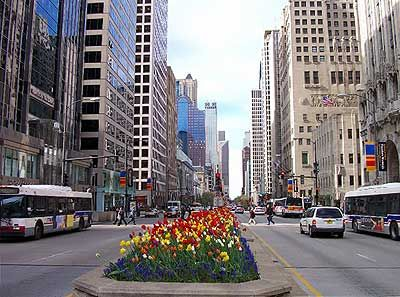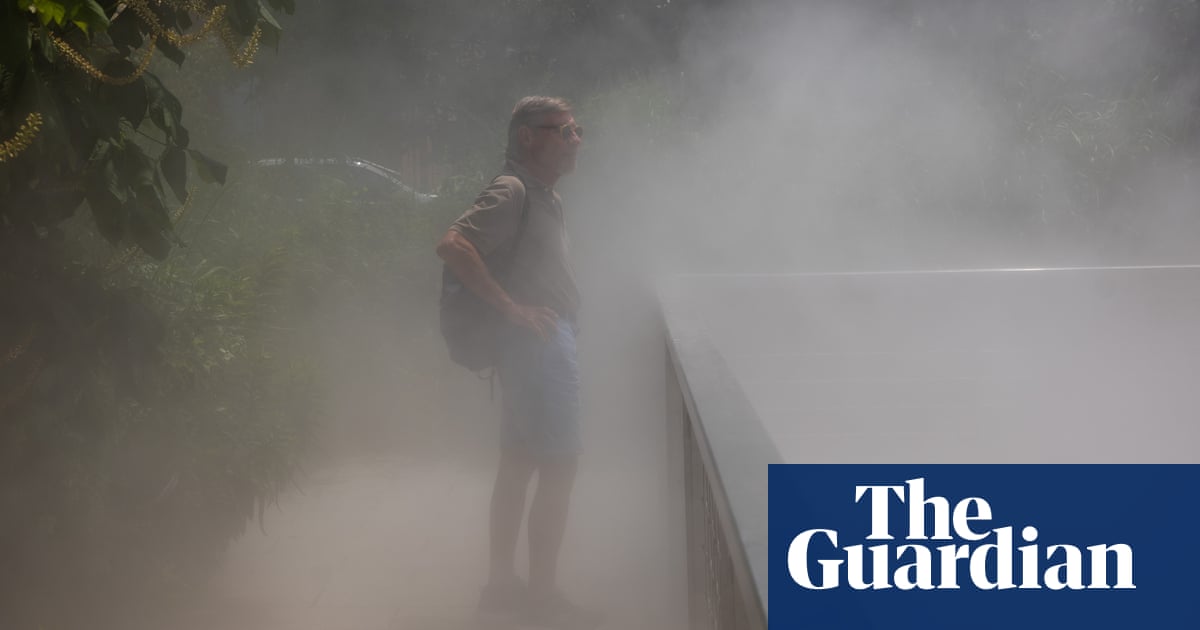Nearly 34 million people in those cities, or 15% of the US population, experiencing temperatures higher than in surrounding areas
Almost 34 million people in 65 major US cities, or 15% of the country’s population, are experiencing temperatures that are 8F higher than their surrounding areas, according to a new analysis from Climate Central, a non-profit research group.
That is largely due to built environments like parking lots and asphalt sidewalks, and a lack of trees, that contribute to what’s known as the urban heat island effect.
The research found the urban heat island effect was strongest in New York City, where the built environment can push temperatures more than 9F higher than nearby areas.
The study, which comes as extreme heat is blistering through the US, putting more than 146 million people under advisories, illustrates how many are enduring even higher temperatures due to the way their cities were built.
This is part of why we need to change the way we build our cities. Vast stretches of wide roads and massive parking lots soak up a lot of heat. Tram lines can have grass between the rails. Pedestrian paths can be built with lighter colors. Cycling pathes take up less space and allow for green space. Building up instead of out keeps cities smaller and more contained, even providing shade on streets.
Less asphalt also mean rainwater run off is less of an issue. Rain water collects dirt, garbage, salt, oils, tire/brake dust, and increases in temperature as it runs along hot road surfaces towards sewers. These all impact local streams and lakes by poisoning the water and disruprting natural temperature regulations (many eggs use water temperature to determine if it is time to hatch and if food will be available when they hatch).
I’m sure planting trees all over a city is expensive, but I’m guessing dealing with all of the effects of excess heat might be worth the cost…
Chicago has a fair amount of trees. Maybe some more boulevard type things with trees can be done or maybe rooftop greenery
There are a lot of places in cities, even cities with a fair amount of trees like Chicago, where there could easily be far more trees. It would just mean taking up more sidewalk space, cleaning up leaves in the fall, petals in the spring, etc. Businesses start complaining about it.
And sometimes it could be trees but they think other things are prettier.
Here’s a bit of the Magnificent Mile in Chicago. Could those flowers be replaced with trees? I don’t see why not.

It depends on what is under that dirt. Is it deep enough for a root system, are there utilities under that, etc?
Also, mature trees will need some space for the root system to collect water and spread without destroying roadway. This is why a lot of warmer cities like to plant palm trees in medians - they have a pretty shallow / narrow root system.
The problem with planting trees in boulevards or in parking lot islands is that they cement and asphalt don’t allow a lot of water to filter through to the roots. They might be fine for a little while, you might be able to nurse them along if you find a way to water them. But ultimately, they will all die off earlier than they should.
There is also increased maintaince as leaves must be cleared from the streets/sewers, dead branches must be removed before they are hazardous, and the city should be monitoring overall health to cut trees before they rot out and fall.
Agreed. Although, it depends on the tree. A lot of warmer cities like palm trees because they have a root system that works well in this scenario.
It’s also worth noting that many cites have utilities running under these streets.
There have to be tree species that will do all right with less water. They might be invasive though, so that would be a different problem.
Bradford pears were used a lot in my area, but were ultimately invasive. I think putting more native shrubs or bushes might help some since their drip like can be kept smaller than a tree’s.
It’s a problem I have to deal with regularly at work. So many parking lots had low canopy trees that just all died off at about the same time due to being in parking islands.
yeah. that image is what I meant by boulevard type things. Im just saying there is not a whole lot of options. Some more can be done but its going to have some hard limits from soil access.
A difference of 8F is about 4.5C for anyone unfamiliar with freedom units.
Thank you!
Went to my pride festival last month. it was 98°F, but within the confines of the pride parade, nestled in the downtown district, surrounded by concrete, it felt like 110°F. The only thing I could accomplish was walking while fanning myself with occasional breaks in the shade. It was so bad, I couldn’t even pause to look at the vendors wares that were set up in unobstructed daylight. It was just too hot to stand and look at anything, I just walked right on by. There was a YMCA building that people would go in, just to stand in the air conditioned lobby for a moment. The doors opened as I walked by and I could feel the glorious chill air rush past me. I would have gone in, but I observed that there were elderly, frail people taking respite from the heat inside, and it didn’t feel right that I (as a young healthy man) should join them.
Basically, it was so hot that the only thing I could really do, is patiently wait until I hit my limit, and then gtfo. I don’t think I’ll ever want to live in a city again after experiencing this kind of heat.
Everyone can be impacted by heat. Take those breaks in the cold air if you need them. In my experience elderly people often have some interesting things to say and I’m sure most of them wouldn’t have even noticed you joining them.
That is largely due to built environments like parking lots and asphalt sidewalks
of course! its those damned sidewalks
I’ve noticed for years that whenever Arizona weather maps are shown, Phoenix temps are always noticeably higher than the surrounding areas. I always have the same thought: Gee, who would have thought building a heat sink in the desert would be a good idea. I guess it’s not just the desert cities that suffer from this






